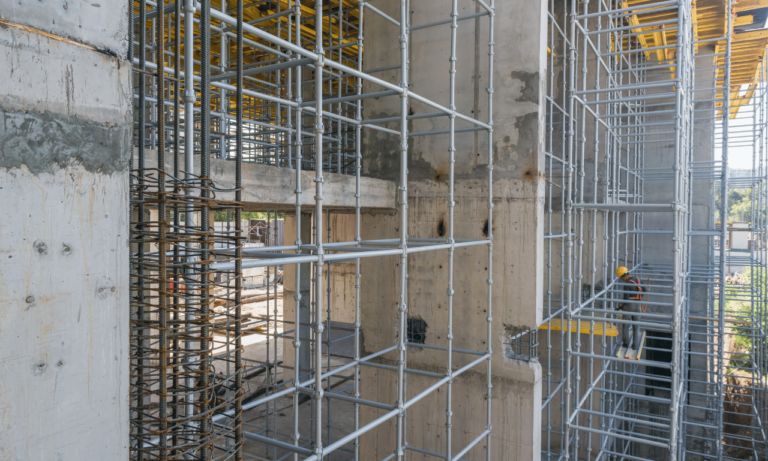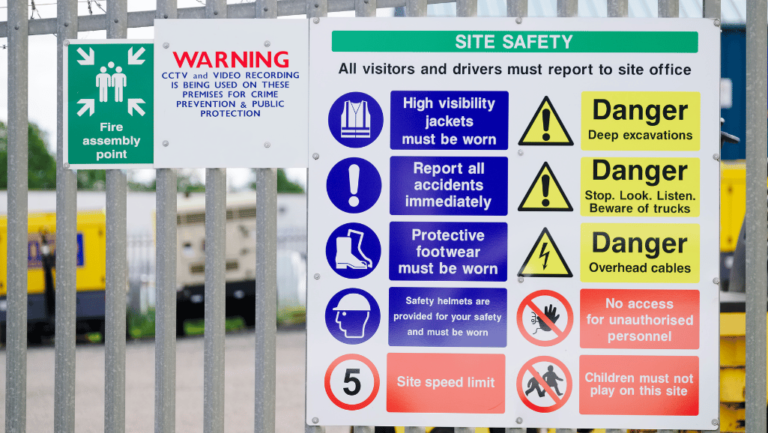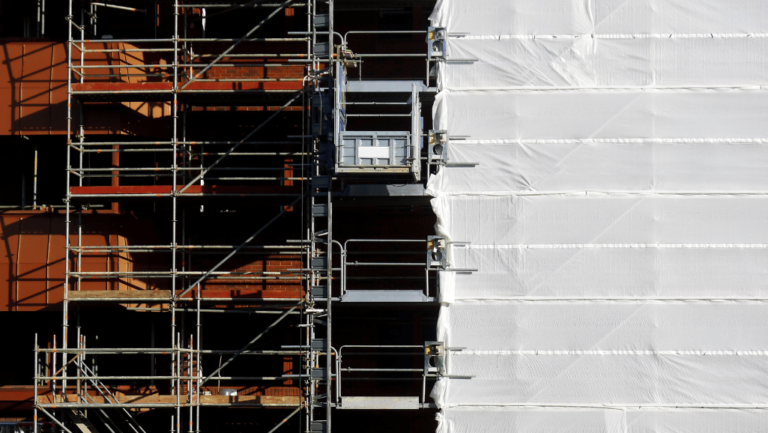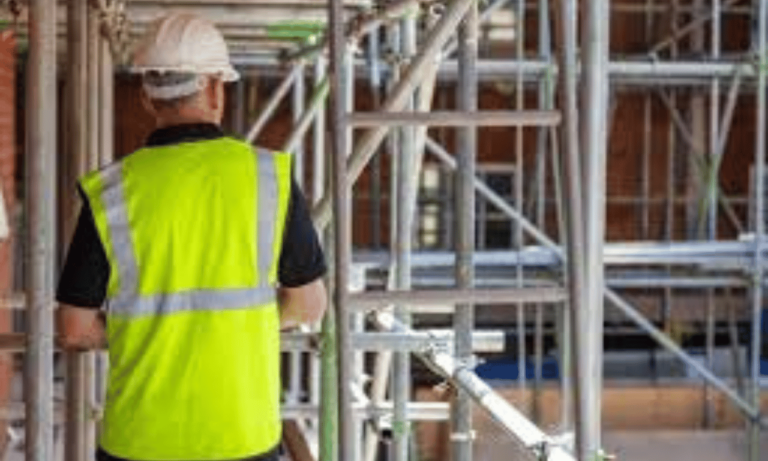Phone:
(+65)8319-0742
Welcome to our comprehensive guide on scaffold erection procedures. Whether you are a construction professional or a DIY enthusiast, it is crucial to understand the importance of following safety guidelines, OSHA regulations, and best practices when assembling scaffolds. In this guide, we will provide you with a step-by-step process for scaffold erection, highlight essential safety measures, and ensure compliance with OSHA requirements.
Key Takeaways:
- Proper scaffold erection procedures are essential for ensuring safety and compliance.
- Follow OSHA regulations and safety guidelines throughout the scaffold erection process.
- Select the right scaffold system, conduct thorough inspections, and implement fall protection measures.
- Adhere to a systematic approach for scaffold assembly, including site preparation, foundation selection, leveling, and securing components.
- Utilize the necessary scaffolding equipment and follow set-up tips for safe assembly.
Understanding Scaffold Safety Guidelines
When it comes to scaffold assembly, following proper safety guidelines is paramount. By adhering to scaffold safety guidelines and implementing best practices, you ensure the well-being of workers and prevent potential accidents. In this section, we will delve deeper into these guidelines and explore the key considerations for scaffold assembly.
Choosing the Right Scaffold System
One of the first steps in ensuring scaffold safety is selecting the appropriate scaffold system for your specific project requirements. Consider factors such as the type of work, load capacity, and height requirements. By choosing the right scaffold system, you can minimize the risk of structural instability and ensure a secure working platform for your workers.
Thorough Inspections
Prior to scaffold assembly, conducting thorough inspections is crucial. Inspect all components, including the scaffold frames, platforms, and guardrails, to ensure they are in good condition and free from any defects or damage. Regular inspections help identify potential hazards and allow for timely maintenance or replacement of faulty components.
Fall Protection Measures
Fall protection is one of the most critical aspects of scaffold safety. Implementing fall protection measures, such as guardrails, toe boards, and personal fall arrest systems (PFAS), significantly reduces the risk of falls from elevated heights. Workers should be trained on how to properly use fall protection equipment and ensure its correct installation and usage on scaffolds.
As visualized in the image above, ensuring proper fall protection measures is essential for scaffold safety.
By understanding and implementing scaffold safety guidelines, such as selecting the right scaffold system, conducting thorough inspections, and implementing fall protection measures, you create a safe working environment for all workers involved. In the next section, we will outline the step-by-step scaffold erection process, providing detailed guidance on how to assemble scaffolds while ensuring compliance with OSHA regulations.
Step-by-Step Scaffold Erection Process
When it comes to scaffold erection, following a step-by-step process is crucial to ensure safety and compliance with OSHA regulations for scaffolding. By carefully executing each stage, from site preparation to securing the scaffold components, you can mitigate potential risks and create a secure work platform. In this section, we will guide you through the essential steps involved in scaffold erection, providing valuable insights and best practices along the way.
1. Site Preparation
- Clear the construction site of debris and obstacles that may hinder scaffold assembly.
- Ensure a firm and level foundation for the scaffold structure.
- Identify any potential hazards or overhead obstructions that may affect scaffold placement and plan accordingly.
2. Foundation Selection
Choosing the appropriate foundation is crucial for scaffold stability. Consider factors such as soil condition, load-bearing capacity, and the height and configuration of the scaffold. Common foundation types include base plates, mud sills, and screw jacks.
3. Scaffold Component Assembly
- Start by assembling the scaffold frames, ensuring proper alignment and connections.
- Add cross braces to enhance stability and prevent lateral movement.
- Attach the platform units, providing sufficient space for workers and materials.
- Install guardrails, midrails, and toe boards to ensure adequate fall protection.
- Secure all components, such as pins, bolts, and clips, as specified by the manufacturer.
4. Leveling the Scaffold
It is essential to level the scaffold to maintain stability and prevent leaning or shifting. Use a spirit level to ensure the scaffold is evenly balanced on all sides. Adjust the height of screw jacks or base plates as needed to achieve proper leveling.
5. Inspections and Testing
Thoroughly inspect the erected scaffold for any defects or weaknesses. Test its stability by applying a light pressure or gently shaking the structure. If any issues are identified, rectify them before allowing workers to access the scaffold.
6. Fall Protection Measures
Implement appropriate fall protection systems, including personal fall arrest systems (PFAS) and guardrails, to ensure the safety of workers while on the scaffold. Regularly inspect and maintain these systems to ensure their effectiveness.
7. Document and Training
Keep comprehensive documentation of the scaffold erection process, including inspection records, training certifications, and maintenance logs. Train workers on the proper assembly and use of scaffolds to minimize accidents and injuries.
By following these step-by-step scaffold erection procedures, you can ensure compliance with OSHA regulations for scaffolding and create a safe working environment for all personnel involved.
Scaffolding Equipment Checklist
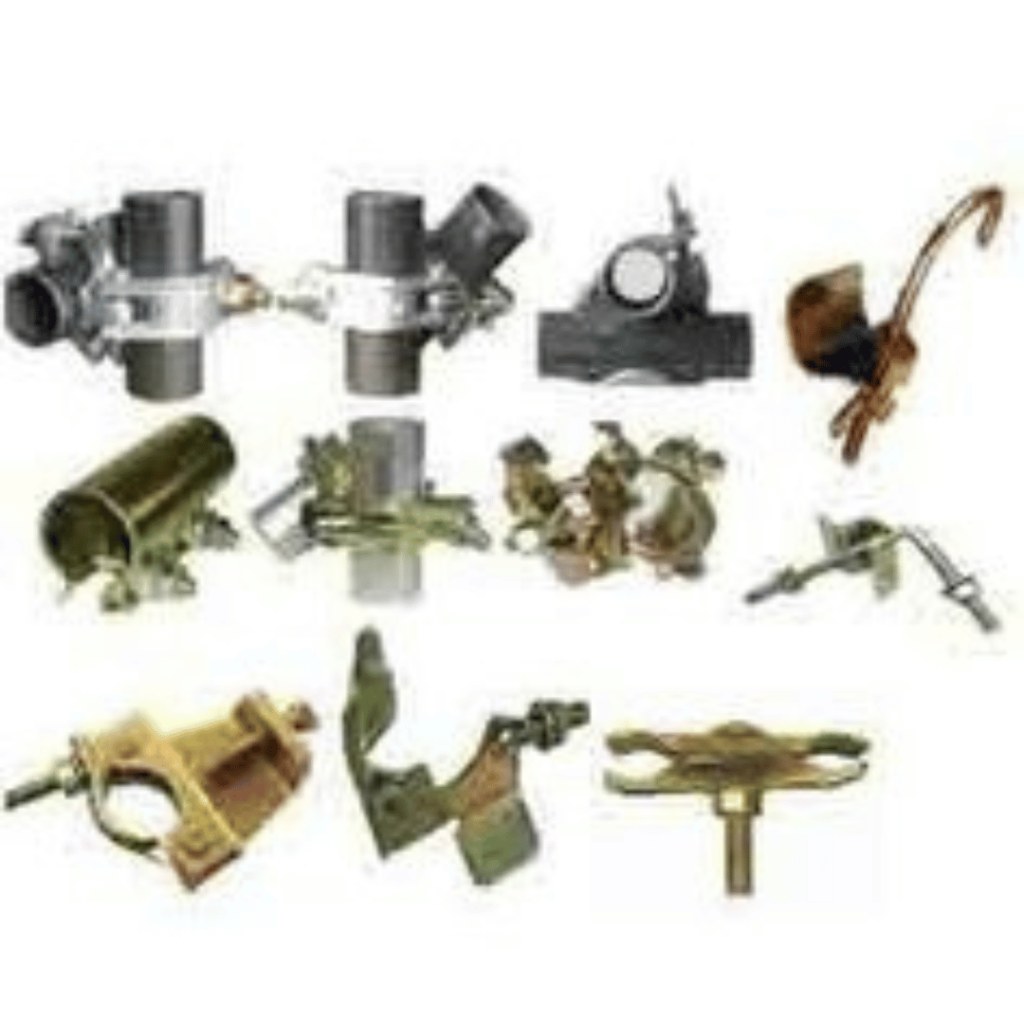
When it comes to safe and secure scaffold assembly, having the right equipment is crucial. This comprehensive checklist includes all the essential scaffolding equipment you’ll need to ensure a safe working environment. Additionally, we’ve included some valuable tips on how to properly set up and use the equipment to prevent accidents and maintain compliance with safety regulations.
Scaffold Equipment Checklist
| Equipment | Quantity | Notes |
|---|---|---|
| Scaffold Frames | 4 | Ensure frames are undamaged and properly secured to create a stable base. |
| Cross Braces | 8 | Use cross braces to provide lateral stability to the scaffold structure. |
| Platforms | As needed | Ensure platforms are of the correct size and securely fastened to the scaffold frames. |
| Guardrails | As needed | Install guardrails along all open sides and ends of the scaffold. |
| Ladders | As needed | Use ladders to provide safe access to different scaffold levels. |
| Base Plates | As needed | Use base plates to distribute the scaffold load evenly onto the supporting surface. |
| Toe Boards | As needed | Install toe boards to prevent tools and materials from falling off the scaffold. |
| Tool Trays | As needed | Use tool trays to keep tools and equipment organized and within reach. |
Remember to conduct regular inspections of all equipment and replace any damaged or worn-out components. Prioritize user safety by ensuring that all scaffold equipment is in good condition and properly used according to manufacturer guidelines.
By following this checklist and implementing the tips provided, you can confidently set up and use the necessary equipment to create a safe and secure scaffolding system. The proper use of scaffolding equipment is essential to protect workers from accidents and to comply with relevant safety regulations.
Ensuring Compliance with OSHA Regulations

When it comes to scaffold erection procedures, strict adherence to OSHA regulations is essential. To ensure the safety of workers and maintain compliance with industry standards, proper training and certification for scaffold erectors are crucial. Let’s take a closer look at the key requirements mandated by OSHA.
1. Scaffold Erection Training Requirements
OSHA regulations for scaffolding emphasize the importance of thorough training for scaffold erectors. It is vital to receive comprehensive instruction on scaffold assembly, usage, and dismantlement. This training not only equips workers with the necessary skills but also ensures they have a clear understanding of potential hazards and how to mitigate them.
In addition to general scaffold erection training, OSHA may require specialized training based on the specific scaffold system being used. For example, erectors working with suspended scaffolds or specialty scaffolds may need additional training to address unique risks.
2. Competent and Qualified Workers
OSHA regulations also call for employers to ensure that scaffold erection is performed by competent and qualified workers. Competency refers to having the necessary knowledge, skills, and experience to safely erect scaffolds. Employers should carefully assess the qualifications of workers and provide ongoing training to enhance their expertise.
Having competent workers on-site is critical as it ensures the scaffold is erected correctly, reducing the risk of accidents and structural failures. It is the responsibility of employers to verify the competence of workers and provide the necessary resources for ongoing education and skill development.
3. Supervisory Responsibilities
Supervisors play a crucial role in ensuring compliance with OSHA regulations for scaffold erection. They must possess in-depth knowledge of the specific scaffold systems being used and oversee the erection process to ensure it aligns with OSHA standards.
Supervisors should be able to identify potential hazards, conduct regular inspections, and address any issues promptly. They are also responsible for overseeing the implementation of proper safety measures, such as fall protection systems, to safeguard workers during the erection process.
4. Documentation and Recordkeeping
OSHA requires employers to keep detailed records of scaffold erection training and certification for each worker involved in the process. This documentation should include the training content, dates, and the names of trainers or training providers. Keeping accurate records demonstrates compliance with OSHA regulations and helps employers track training requirements.
Additionally, employers should maintain records of scaffold inspections, certifications of scaffold components, and any modifications made to the scaffold system. These records serve as evidence of compliance and can be valuable in the event of an OSHA inspection.
By adhering to OSHA regulations for scaffolding and ensuring proper training, employers can create a safe and compliant work environment. Workers can perform scaffold erection procedures with confidence, knowing they have the necessary skills and knowledge to do their job safely.
Proper Scaffold Dismantling Steps
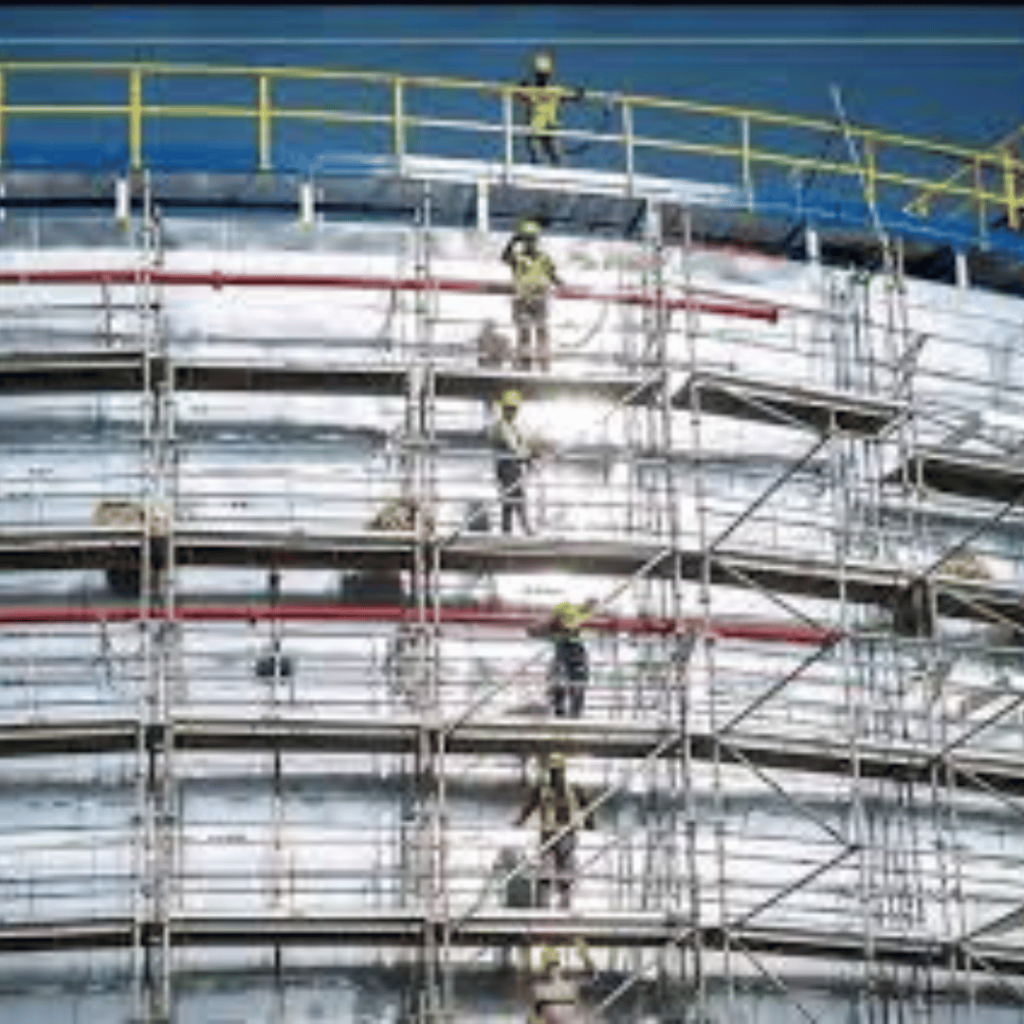
Ensuring the safe dismantling of scaffolds is just as crucial as their proper assembly. Following the proper scaffold dismantling steps, as outlined by OSHA regulations for scaffolding, is essential to ensure the safety of workers and maintain the structural integrity of the scaffold. Here, we provide a systematic approach to scaffold dismantling that minimizes risks and promotes a safe work environment.
Step 1: Assess the Work Area
Prior to dismantling the scaffold, conduct a thorough assessment of the work area. Remove any debris or objects that may hinder the dismantling process. Ensure that there are no electrical hazards, such as overhead power lines, that may pose a risk.
Step 2: Secure the Scaffold Components
Start by securing the scaffold components, such as planks, guardrails, and braces, using appropriate tie-off methods. This prevents accidental dislodging during the dismantling process and minimizes the risk of falling objects.
Step 3: Remove Platform Decking
Begin by removing the platform decking methodically. Start from the highest level, carefully detaching each plank and lowering them to the ground. Use caution to prevent any loose planks from falling.
Step 4: Dismantle Guardrails and Braces
Once the platform decking is removed, proceed to dismantle the guardrails and braces. Start at the top level and work your way down. Ensure that each guardrail and brace is removed carefully and stored securely.
Step 5: Disassemble Vertical Components
Upon removing the guardrails and braces, disassemble the vertical components of the scaffold. Take down the uprights, horizontal bars, and other supporting elements systematically, keeping the scaffold stable at all times.
Step 6: Lower Components to the Ground
Using appropriate lowering techniques, carefully lower the scaffold components to the ground. Avoid dropping any components to prevent damage or injury. If necessary, use tag lines or ropes to guide the descent.
Step 7: Store Scaffolding Components Properly
Once all the scaffold components have been dismantled and lowered, store them properly in a designated area. Protect the components from the elements and ensure that they are organized for ease of future use.
By following these proper scaffold dismantling steps, you can minimize the risk of accidents and injuries during the dismantling process. Remember to always refer to the specific guidelines and regulations set forth by OSHA for scaffold dismantling procedures to ensure compliance and safety.
| Step | Description |
|---|---|
| 1 | Assess the work area by removing debris and identifying any hazards. |
| 2 | Secure scaffold components to prevent accidental dislodging during dismantling. |
| 3 | Remove platform decking, starting from the highest level and lowering planks carefully. |
| 4 | Dismantle guardrails and braces, working from the top level down. |
| 5 | Disassemble vertical components of the scaffold, ensuring stability throughout the process. |
| 6 | Lower scaffold components to the ground using appropriate techniques. |
| 7 | Store scaffold components properly in a designated area, protecting them from damage. |
Safeguarding Scaffold Users
While following scaffold safety guidelines and best practices for scaffold assembly is crucial, there are additional measures that can be implemented to ensure the safety of scaffold users during the erection process. By prioritizing these measures, companies can create a secure work environment and minimize the risk of accidents and injuries.
Proper Signage and Communication
Effective communication is essential on construction sites, especially when it comes to scaffold assembly. Clearly posted signs and labels provide important instructions and warnings to workers, helping them understand potential hazards and safety procedures. By strategically placing signs in easily visible locations, companies can promote awareness and encourage compliance with safety guidelines. Additionally, establishing clear communication channels, such as regular toolbox talks and safety meetings, fosters an open dialogue regarding scaffold safety and best practices.
Regular Inspections and Maintenance
Regular inspections of scaffold equipment and structures are crucial to identify any signs of wear, damage, or potential structural issues. By conducting routine inspections, companies can address maintenance needs promptly, ensuring the integrity and stability of the scaffold. Inspection checklists can guide workers in assessing key aspects, such as guardrails, toeboards, and platform conditions. By incorporating these regular inspections into the scaffold assembly process, companies can mitigate risks and maintain a safe work environment.
Implementing these additional safety measures, along with adhering to scaffold safety guidelines and best practices for scaffold assembly, is crucial to creating a secure work environment. By prioritizing proper signage, clear communication, regular inspections, and maintenance, companies can safeguard scaffold users and enhance overall safety on the job site.
Conclusion
In conclusion, this guide has provided a comprehensive overview of essential scaffold erection procedures. By following safety guidelines, adhering to OSHA regulations, and implementing best practices, workers can ensure secure and compliant scaffold assembly.
Throughout the guide, we emphasized the importance of selecting the right scaffold system, conducting thorough inspections, and implementing fall protection measures. We also provided a step-by-step erection process, a checklist of necessary equipment, and guidance on dismantling scaffolds. Additionally, we discussed the significance of compliance with OSHA regulations, including proper training requirements.
To further safeguard scaffold users during the erection process, it is crucial to implement additional safety measures such as signage, clear communication, and regular inspections. By prioritizing these practices, workers can create a safe and secure environment for scaffold assembly.
In summary, scaffold erection procedures should never be taken lightly. By following the guidelines and best practices outlined in this guide, workers can ensure not only their own safety but also the safety of others. So, take the necessary steps, stay compliant, and prioritize safety in all scaffold erection activities.
FAQ
What are the essential scaffold erection procedures?
The essential scaffold erection procedures include proper site preparation, selecting the right foundation, leveling the scaffold, securing the components, and implementing fall protection measures. It is crucial to follow OSHA regulations and best practices throughout the process.
What are the scaffold safety guidelines to be followed during erection?
Scaffold safety guidelines include selecting the appropriate scaffold system, conducting thorough inspections, securing the scaffold to prevent movement, ensuring proper access and egress, and implementing fall protection measures such as guardrails and personal fall arrest systems.
What is the step-by-step scaffold erection process?
The step-by-step scaffold erection process involves site preparation, foundation selection, leveling the scaffold using adjustable base plates, connecting the scaffold components according to manufacturer guidelines, and securing the scaffold to prevent movement. It is important to follow OSHA regulations and best practices throughout the process.
What should be included in a scaffolding equipment checklist?
A scaffolding equipment checklist should include the scaffold frames, cross braces, guardrails, planks, base plates, adjustable legs, connectors, scaffold pins, and other necessary accessories. Each component should be inspected for damage and proper functionality.
What are the OSHA regulations for scaffold erection?
OSHA regulations for scaffold erection include proper training and certification for scaffold erectors, compliance with scaffold load capacity requirements, fall protection measures, regular inspections, and competent supervision. It is essential to adhere to these regulations to ensure worker safety and avoid penalties.
What are the proper scaffold dismantling steps?
Proper scaffold dismantling steps involve removing the planks and accessories, systematically disassembling the scaffold components, lowering them safely to the ground, and storing them appropriately. Following OSHA regulations and using proper dismantling techniques is crucial to maintain worker safety and preserve the scaffold’s integrity.
How can scaffold users be safeguarded during the erection process?
To safeguard scaffold users during the erection process, it is important to implement proper signage to indicate work in progress, communicate clearly with workers to ensure awareness of potential hazards, and regularly inspect the scaffold for any hazards or deficiencies. Adhering to safety guidelines and best practices is vital to protect all individuals on-site.







